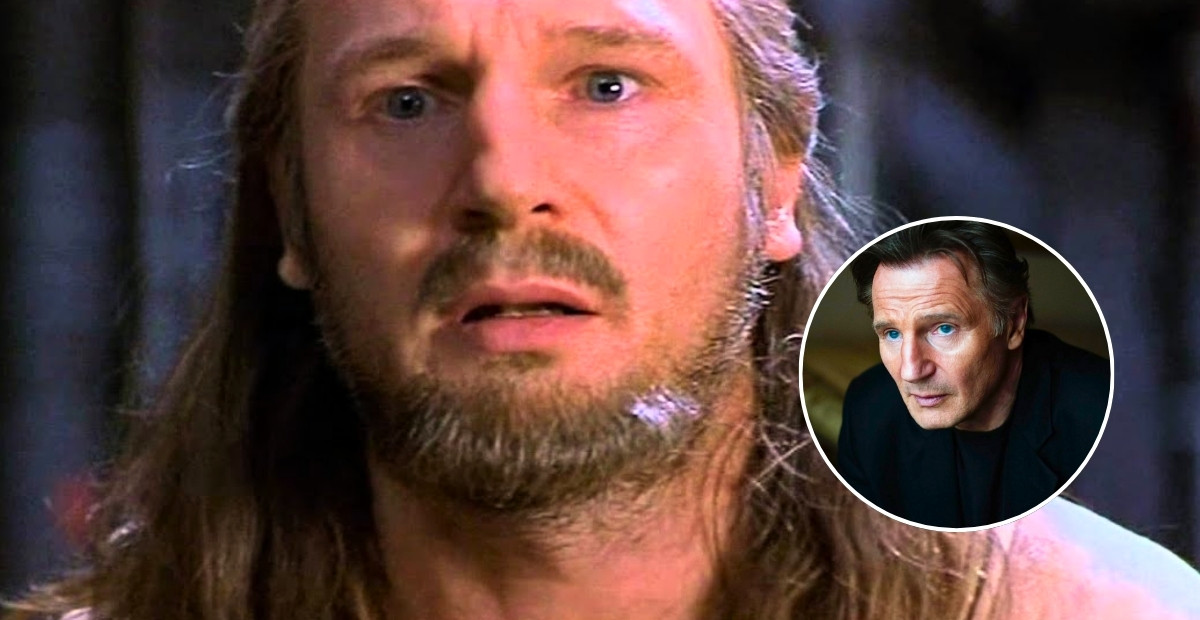Liam Neeson recently brought up something that’s been on my mind for a long time too — the way Qui-Gon Jinn died in The Phantom Menace. If you’ve ever rewatched that final fight with Darth Maul and thought, “Wait, that’s it?” — you’re definitely not alone.
“Hardly a Master Jedi”
In a recent interview with GQ, Neeson talked about some of his most iconic roles, and when he got to Qui-Gon, he didn’t hold back. Looking back on how the duel ended, he said:
“I’m supposed to be a master Jedi, you know? My character fell for that ‘Oh! I’m going for your face! No I’m not. I’m going for your stomach.’ [makes death noises] ‘Oh, you got me!’ Like, oh please. Hardly a master Jedi.”
It’s clear he wasn’t thrilled about how easily his character was taken down — and honestly, I get it. Qui-Gon wasn’t supposed to be some average Jedi. He was a Master, trained by Count Dooku, and experienced in the ways of the Force. So the way it played out — him getting tricked by a basic feint and dropped in a few seconds — felt off.
There Was More to the Fight Than the Final Blow
But the fight wasn’t just about that one move. When I think about it again, it wasn’t just that Qui-Gon “fell for a trick.” Maul actually smacked him in the face with his hilt before the stab, which threw him off. That moment gave Maul the opening. It wasn’t some clumsy mistake — it was a clean, calculated move.
And honestly, Maul had the edge in that fight from the start. He was younger, faster, and fighting with a double-bladed lightsaber that most Jedi had probably never even seen in real combat. When you rewatch the fight, you can see Qui-Gon getting winded halfway through. He was clearly struggling to keep up.
He was exhausted by the time they reached that circular chamber, and that short pause from the laser gates didn’t help him recover — it helped Maul reset. When the duel picked up again, Qui-Gon’s attacks were forceful but not as sharp. His style — which focuses on aggressive movements and flips — didn’t work in a tight space. Maul’s defense held, and he waited for the right moment to strike.
Jedi Weren’t Ready for the Sith
Something else that stands out to me is how unprepared the Jedi were at that time. They hadn’t seen a Sith in hundreds of years. Their training wasn’t built around real saber-to-saber combat. Most of what they practiced was blocking blaster bolts or doing routine sparring sessions with other Jedi.
Maul wasn’t just skilled — he was trained to kill Jedi, while the Jedi weren’t being trained to survive against Sith. So even a Jedi Master like Qui-Gon, with all his knowledge and wisdom, wouldn’t have had actual experience fighting someone like Maul. That duel was probably his first time going up against someone that deadly, that determined to win no matter what.
That Scene on Set Was Actually Pretty Fun
Despite how he feels about the outcome, Neeson still has some fun memories from making the movie. He said the first time he and Ewan McGregor activated their lightsabers on set, they both made the iconic “vwoom” noise without even thinking.
“The first time Ewan McGregor and I had to draw our lightsabers… we both made the sound at the exact same time,” he said. George Lucas had to remind them, “Boys, you don’t have to do that. We can add that stuff.”
It shows how much the cast really got into the world they were creating. Even though they were professionals on a big-budget movie, you could still tell how excited they were to hold those sabers in their hands.
Neeson Isn’t in a Hurry to Come Back Again
Liam Neeson has returned to Star Wars a few times. He voiced Qui-Gon in Tales of the Jedi, made a brief appearance as a Force ghost in Obi-Wan Kenobi, and his son even voiced a younger version of the character. But even with all that, he doesn’t seem interested in coming back for more.
“It’s diluting it to me, and it’s taken away the mystery and magic in a weird way,” he said, when asked about possibly doing another return.
That line says a lot. For him, Star Wars was something special — and now with so many shows, side stories, and spin-offs, the original feeling is getting a little lost.
Maybe It Wasn’t About Losing — Just the Way It Looked
In the end, I don’t think Liam Neeson had a problem with Qui-Gon dying. It was more about how it was shown. There’s a big difference between a heroic sacrifice or a drawn-out loss in battle — and a quick stab after a basic fake-out.
But when you look deeper into that duel, the story makes more sense than it seems at first glance. It wasn’t just about missing a block — it was about age, exhaustion, limited real combat experience, and going up against someone who trained specifically to defeat Jedi. That fight was meant to show how the Sith had truly returned — and how unprepared the Jedi were for what was coming.
And maybe, in that sense, it did its job.

